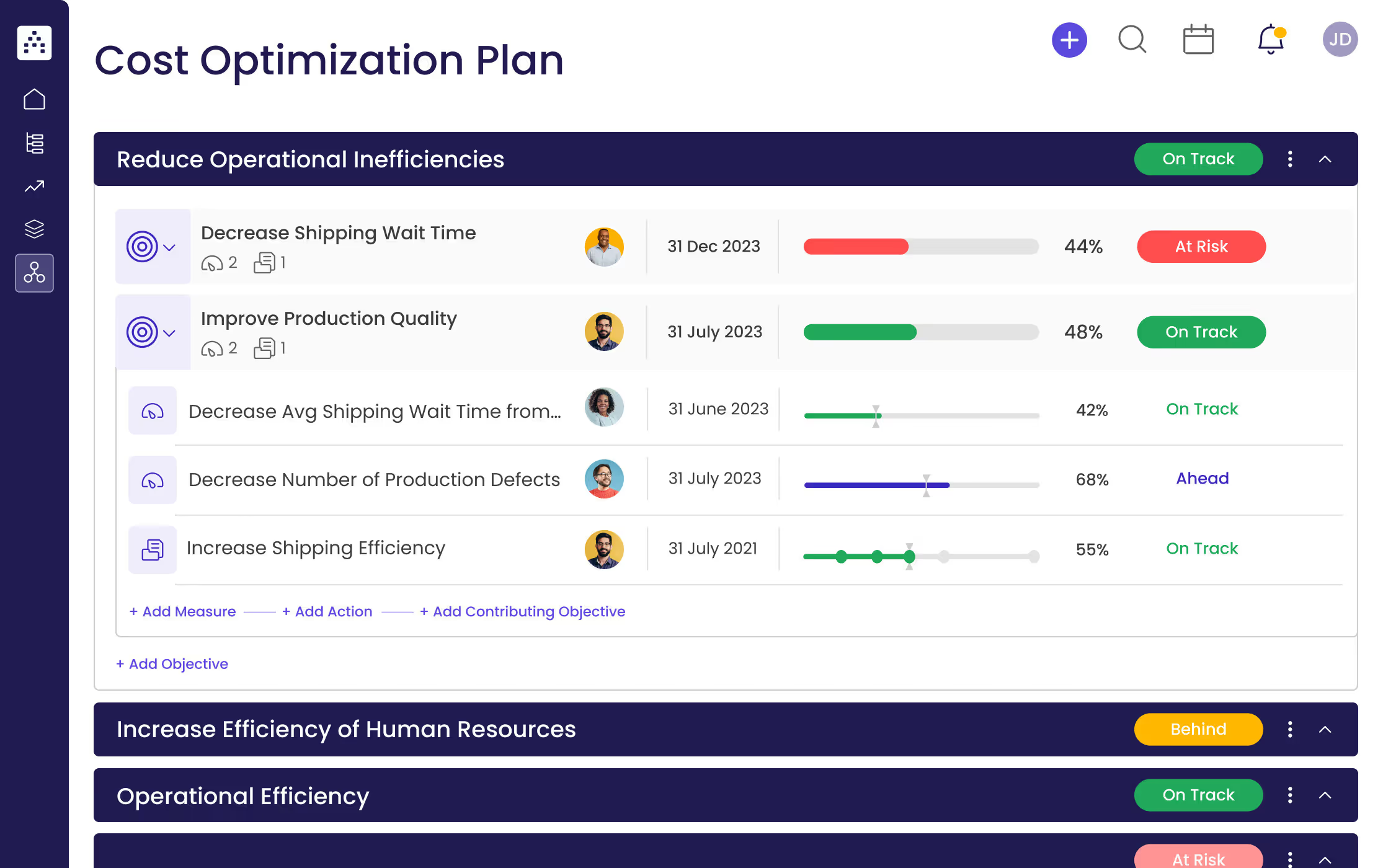What is a Cost Optimization Plan?
A cost optimization plan is aimed to reduce operational costs and improve efficiency. It typically includes a detailed analysis of current cost structures, objectives, and performance metrics that are used to measure the success of cost optimization initiatives. The plan is often used by businesses with limited resources to maximize the efficiency of their operations.
What's included in this Cost Optimization Plan template?
- 3 focus areas
- 6 objectives
- 6 projects
- 6 KPIs
Each focus area has its own objectives, projects, and KPIs to ensure that the strategy is comprehensive and effective.
Who is the Cost Optimization Plan template for?
The Cost Optimization Plan template is designed for businesses of all sizes and industries. It provides an easy-to-use format to help create a plan that outlines objectives, projects and initiatives to reduce operational costs and improve efficiency. This template can be customized to fit the unique needs of any business.
1. Define clear examples of your focus areas
When creating a Cost Optimization Plan, the first step is to define the focus areas for your plan. A focus area is a broad area that contains objectives, actions, and measurable targets that aim to reduce operational costs. Examples of focus areas may include reducing operational inefficiencies, increasing efficiency of human resources, and improving business processes.
2. Think about the objectives that could fall under that focus area
Once a focus area has been established, the next step is to create objectives that are related to the focus area. Objectives are specific goals that are designed to achieve the desired results of the focus area. Examples of some objectives for the focus area of Reduce Operational Inefficiencies could be: Decrease Shipping Wait Time, and Improve Production Quality.
3. Set measurable targets (KPIs) to tackle the objective
Once objectives have been established, measurable targets, also known as Key Performance Indicators (KPIs), must be set in order to measure progress. These KPIs are used to track the progress of the objectives and evaluate the success of the cost optimization plan. An example of a KPI for the focus area of Reduce Operational Inefficiencies could be: Decrease Avg Shipping Wait Time from 2.2 days to 1.5 days.
4. Implement related projects to achieve the KPIs
Once the objectives and measurable targets have been established, the next step is to create and implement related projects, also known as actions, to achieve the KPIs. These projects are designed to help achieve the desired results of the objectives. An example of a project related to Reduce Operational Inefficiencies could be: Increase Shipping Efficiency.
5. Utilize Cascade Strategy Execution Platform to see faster results from your strategy
The Cascade Strategy Execution Platform is an innovative tool that can help businesses achieve faster results from their cost optimization plans. This platform provides an easy-to-use interface that allows businesses to quickly and accurately track progress, measure results, and adjust strategies based on the data collected.


